I’ve used essential oils in our home for almost 20 years, all of these years they’ve had priority in the baby’s nursery. They have helped me replace harmful chemicals to create a nurturing, natural space for my little ones. Essential oils are not just fragrance, they support a healthy body & home and soothe your senses.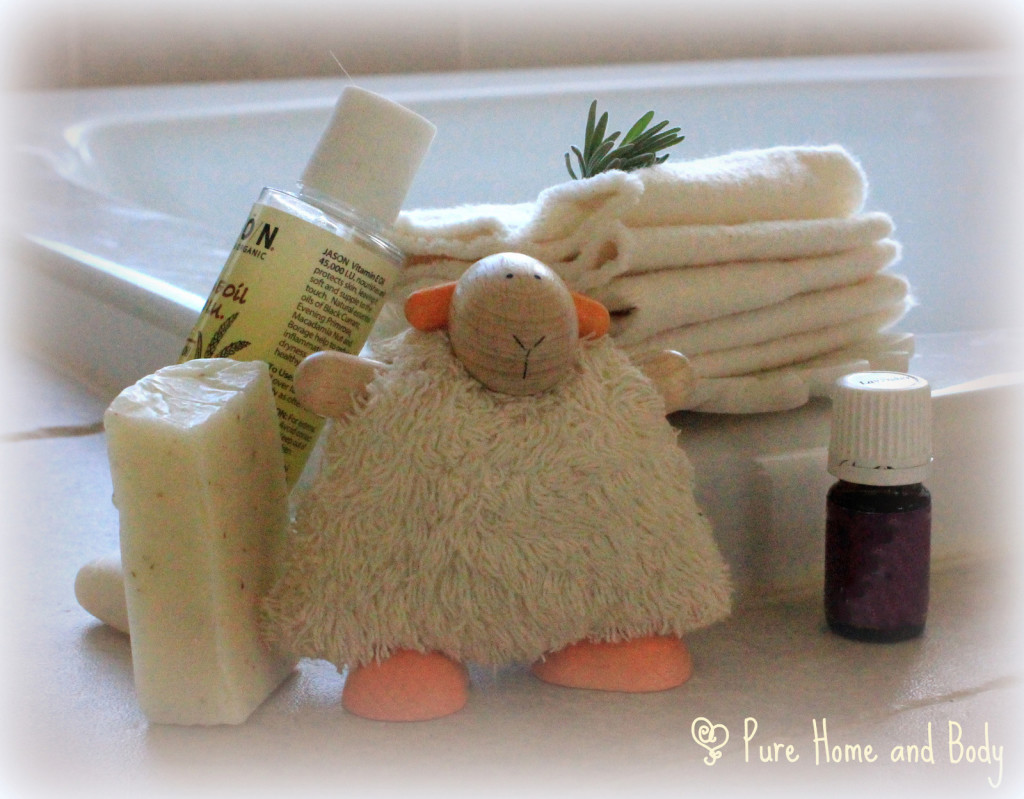
Therapeutic essential oils are pure plant extracts filled with so many natural qualities that man-made chemicals cannot match.
Man has been trying to replicate these natural substances for decades. The production of Chanel no. 5 in the 1950’s was the first mass-production of chemical perfumes and just the beginning of secret recipes manufacturers used to create synthetic replicas of nature’s finest creation. Since then, our American culture has embraced synthetic scents in the forms of body care products, candles, room deodorizers and more. The majority of consumer products with fragrance in the USA are synthetic, just a chemical cocktail designed to imitate natural plant fragrance. The ingredient lists are also protected by labeling laws which do not require the companies to disclose full information to consumers.
EWG’s release of Not So Sexy, The Health Risks of Secret Chemicals in Fragrance, almost three years ago, revealed the hidden chemicals in synthetic fragrance and found many of these elements disrupt hormones, the endocrine systems and more. This is information that should be in the hands of any new parent or those who care for children. The number one choice you can make when creating a Natural Nursery for little ones is to eliminate the use of any product with artificial fragrance, especially if you are pregnant or nursing.
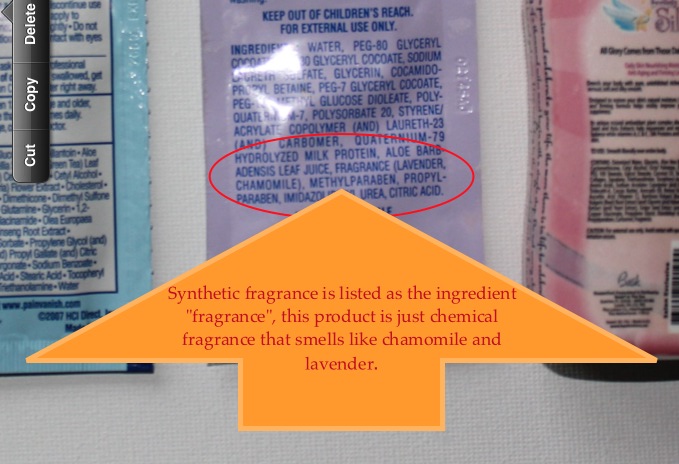 How do I identify synthetic fragrance? The easiest way to spot them is to look for the ingredients fragrance, perfume or parfum. This is a clear indicator the product contains chemical fragrance which you’ll want to avoid exposing your babies and children to. Many have been linked to skin irritations, reproductive disorders and even trigger asthma. Many of these chemicals are even absorbed by developing babies from their mother’s exposure. So, the time to start eliminating these chemicals is now, before you even discover you are pregnant. Synthetic fragrance is like second hand smoke, affecting all those exposed to it including your other children, family members and friends. It’s not good for anyone.
How do I identify synthetic fragrance? The easiest way to spot them is to look for the ingredients fragrance, perfume or parfum. This is a clear indicator the product contains chemical fragrance which you’ll want to avoid exposing your babies and children to. Many have been linked to skin irritations, reproductive disorders and even trigger asthma. Many of these chemicals are even absorbed by developing babies from their mother’s exposure. So, the time to start eliminating these chemicals is now, before you even discover you are pregnant. Synthetic fragrance is like second hand smoke, affecting all those exposed to it including your other children, family members and friends. It’s not good for anyone.
The natural choice The good news is that all this chemical fragrance can be replaced very easily. It starts with changing your perspective. Most stores are filled with chemical fragrance, it’s all we find on many shelves so most people don’t even consider more natural options. Essential oils, real flowers and plants, even foods are the only true sources of pure aroma and fragrance. Essential oils are versatile, portable, and easy to use once you re-think how you’ll use this natural scent in your home. If they are truly therapeutic grade with no fillers, they should last forever if stored correctly. Before you know it, it will be second nature and you’ll soon forget old patterns of just purchasing packaged goods with artificial aromas. Once you take the step towards pure, green options in essential oils, your nose will quickly adjust and be able to identify the good from the bad.
How do I use essential oils? Essential oils are powerful, so they should always be diluted. The can be used in the nursery:
- Topically – Most essential oils should be diluted and used under the care of a knowledgeable aromatherapist. Lavender essential oil is one that can be used undiluted or “neat” on most without irritation. Sometimes people get irritations from applying essential oils to their skin. This happens for a couple of reasons. First, if it is a synthetic oil or has any chemicals or fillers (which by law, manufacturers do not have to disclose) these may irritate the skin. Unknowing consumers may assume it is the plant oil they are reacting to when it is often a filler. The second reason one may have a reaction is if essential oils are applied on skin that has other body care products or lotions which react with the plant oils. Never use essential oils on traditional body care products that have chemicals in them. Essential oils detoxify the body, if you combine them with chemical body care products it will detoxify on your skin, yuk! A safe place to start using essential oils topically is on the soles of the feet. The skin is thicker and also contains hundreds of nerve endings that transport the essential oils to all parts of the body. Massage is also a great way to connect with your baby, skin contact is powerful and adding essential oils will help calm and relax both of you.
- Inhalation – Just breathing essential oils in delivers oxygen to your cells and brings nutrients to your whole body. Essential oils penetrate the blood-brain barrier and have a powerful effect on our senses including our emotions. Inhalation can help ease anxiety, lift depression and open airways. Our minds form powerful connections with fragrance, so adding essential oils and pure aroma to your nursery will help create lasting, positive memories for you and your baby. Breathing in anti-bacterial essential oils purifies the respiratory tract and supports the body’s natural immunity to invaders without disrupting our body’s natural defenses. When you make your own air freshener, you’ll have a nice way to freshen the air and deliver purifying essential oils by inhalation.
Are essential oils safe? Essential oils have been around for centuries without side effect.
Truth Lavender essential oil is listed in the British Pharmacopoeia as a medicine (it’s been there for over 200 years) and used all over the world safely on boys and children. It’s also the first essential oil every nursery should have to replace harmful chemicals, naturally cleanse the air and lift the spirits of mom’s and babies. I’ve used it on all 6 of my children since birth with no side effects. Most of these uses are what I’ve done in our home the past 17 years, from some great resources by Jane Buckle R.N. (author and educator in Clinical Aromatherapy), Valerie Ann Worwood, Kurt Schnaubelt and other authors of my favorite books and studies in aromatherapy. These are definite resources for anyone serious about integrating essential oils into a natural home.
Essential Oils are powerful substances and deserve respect. One drop goes a long way, especially with babies and children. Babies need only 1/8 a drop to be effective, how much is this? Place a drop in the palm of your hand and pick up the drop with one finger, the amount on your finger is about that amount. Always err on the side of caution and use less for babies and children. They will be just as effective, and your supply of oils will last longer! Consult an aromatherapy desk reference for specific usage of oils for kids other than those listed here. This information is not intended to diagnose, treat or cure any disease or sickness and has not been evaluated by the FDA. If you need medical assistance, see a doctor.
Myth There are some myths flying around on the internet that I’d like to address. The main one is that using lavender oil on boys will cause them to develop breasts. This silly claim came from one study on 3 boys who had a lavender body product applied to their chests for several months. When the application stopped the breast development stopped. Therefore, the study concluded that lavender oil is harmful to boys. 3 major points that were not addressed in the study are:
- What other chemicals were in the lotion? There are more research findings that show synthetic chemicals disrupt hormones than I can cover here, including soy, BPA and Parabens which were common ingredients in body care products and just banned from baby products in the past few years. They are still allowed in “adult” products.
- Was the lavender “oil” therapeutic, food grade essential oil or just a chemical, lavender scented “oil”?
- What other products or foods where these boys consuming or using that may have contributed to their condition? (some studies have found boys & men consuming large quantities of soy products and soy milk will develop similar symptoms).
Here’s the list and how you can use essential oils to replace chemicals in your baby’s nursery: Make sure you are using only the purest, food grade essential oils to guarantee a non-toxic nursery. Avoid essential oils that do not have a food supplement label or you cannot be guaranteed that it is only plant oils in the bottle. Invest in the best verified quality if you want to replace products with synthetic fragrance. When you dilute essential oils for babies and children, use organic Extra Virgin olive oil for the purest option. Other gentle oils are jojoba and borage oil.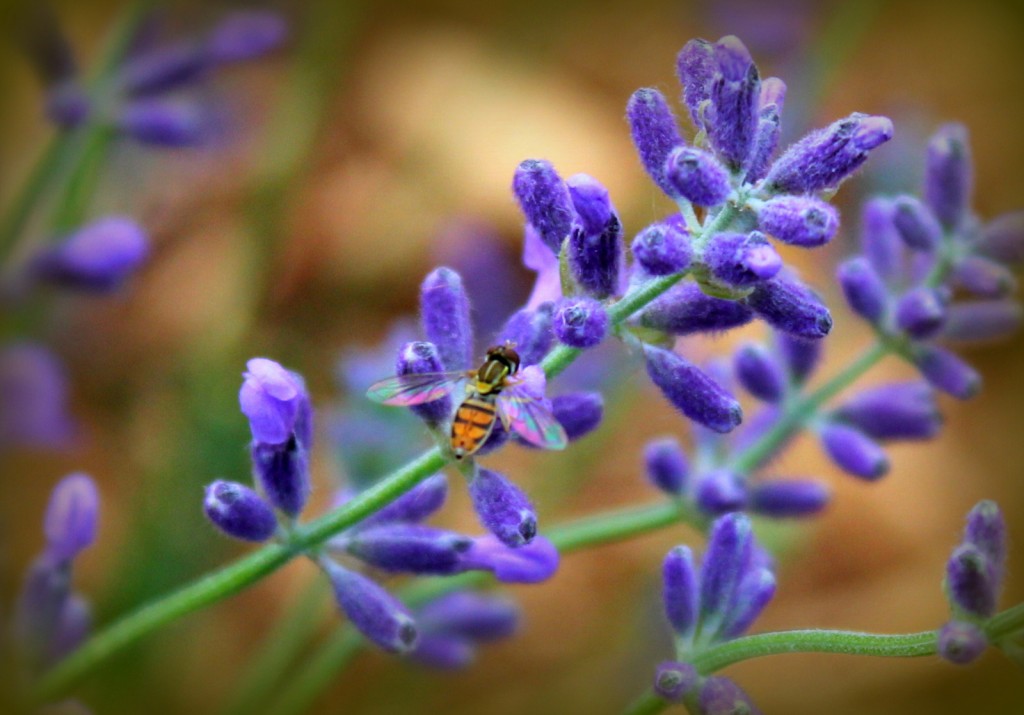
Lavender I’ve used lavender essential oil with all my newborns. This versatile, gentle oil speeds healing, soothes irritated skin and is a natural anti-depressant. It’s a calming scent and harmonizes aroma when blended with other oils. I brought my lavender with me to the hospital for each birth and used 5-10 drops in the sitz bottle to help heal myself physically. The pure scent is soothing to everyone’s senses and brings a sense of calm to your new family. It’s especially a nice deodorizer and disinfectant at the hospital for you, your baby and any visitors. Lavender essential oil is also excellent for burns, scrapes and even cools a fever. While it’s best to dilute lavender oil for babies, it’s safe to use lavender undiluted (“neat”) on children given that it is pure and not filled with synthetics. Apply 1-2 drops to the soles of the feet to cool the body and fight a fever. You can repeat applications every hour until needed. I’ve found I rarely need to do this more than 3 or 4 times and it helps the body fight a fever.
Natural baby wipes One of my favorite uses for lavender essential oil is to use it for cleaning baby’s bottom. None of my kids really got diaper rash (except a couple of times when I was nursing and ate pizza sauce. Surprisingly, their little bottoms did get irritated whenever I used commercial baby wipes which cleared up quickly after I went back to this simple lavender water to clean them) I use a wipes warmer or recycle a wipes container for a more natural option and add 4-5 drops of therapeutic grade lavender, add 1/4 c pure water, stir or shake vigorously then add a stack of organic flannel cloths that are already pre-folded. You could also add soft disposable paper towels that have been pre-folded. I really like the organic flannel cloths, they can be really economical if you just buy a yard of organic flannel and cut or tear into the size you’d like. If you tear the flannel you don’t even have to finish the edges. Lavender essential oil is naturally anti-bacterial so you don’t have to worry about adding preservatives to this. You can mix up enough to last you several days or a week. I bring these with me when we travel and just put some in a ziploc bag or travel wipes container. These wipes are great for diaper time,cleaning little baby & toddler hands, and faces after eating.
Lemon essential oil has been used in European hospitals for decades as a natural disinfectant. Citrus oils ease anxiety and depression and they are naturally anti-bacterial. Diffuse lemon essential oil in the nursery to cleanse the air, you can also use it to safely clean soft, stuffed animals and baby items that cannot go into the washing machine. Just place 2-3 drops of food grade essential oil onto a damp washcloth and wipe surfaces clean. Make sure you only use quality, Therapeutic food-grade essential oils. Citrus fruits are highly sprayed with fungicides and ripening agents. Lemon essential oil is pressed from the rind, if you have fruit that is not organic, you will get highly concentrated pesticide residue in the essential oil. Check out 10 more uses for lemon essential oil.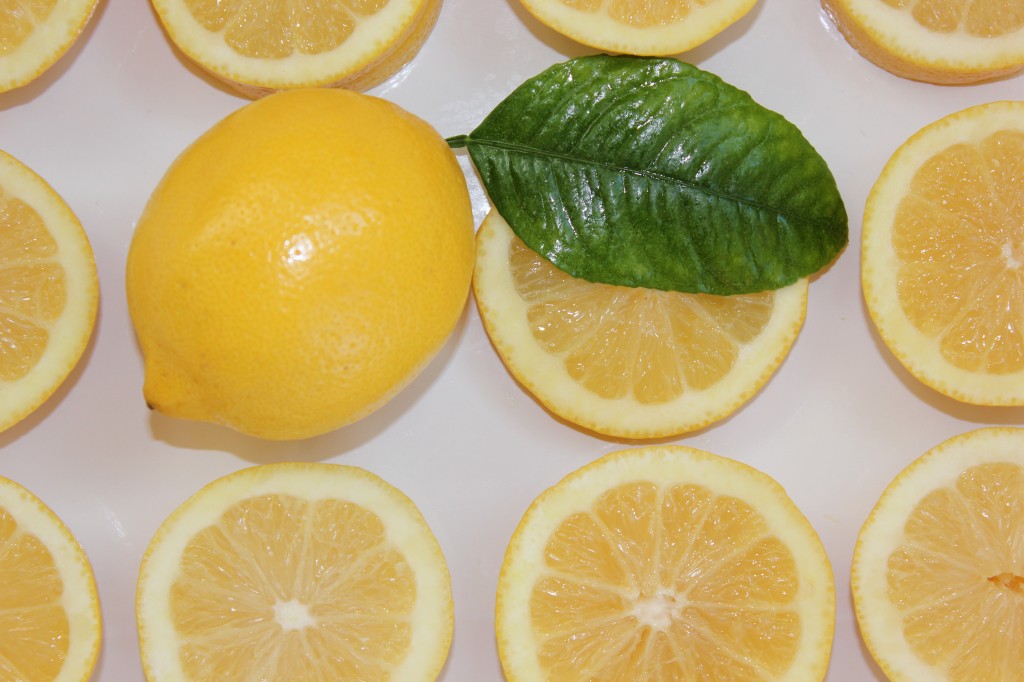
Rose essential oil is one of the most expensive, partly because it takes a great deal of plant material to make the oil, about 3,000 pounds of petals makes 1 pound of essential oil. Make sure you buy rose oil from a reputable source as it’s one of the most synthesized and replicated oils along with lavender and frankincense. You’ll want to make sure your investment is in the pure thing. It is one of the most valued essential oils because of it’s gentleness and versatility. Essential oils have a measurable electrical frequency and rose oil is one of the highest frequency oils which means it can have a great impact on our emotional and physical body bringing harmony to all the senses. Rose oil is an anti-depressant, one whiff of this oil is powerful to the the psyche and very calming for moms and babies.It’s also one of the most highly sought after for skin care products because of it’s healing potential to the skin. Rose oil is gentle and soothing to a baby’s delicate skin. Add just 2 drops of rose essential oil to 4 ounces of Aubrey’s pure aloe vera for a nourishing, uplifting tonic for baby’s skin.
Chamomile essential oil is typically found as Roman or German chamomile. German chamomile is very soothing to baby’s new skin and could be used in a welcoming massage blend with lavender oil a few days after birth. Chamomile German in particular is anti-inflammatory and healing to irritated skin and would also make a nice diaper wash. Don’t be surprised by German chamomile’s blue color, this a natural element called azulane. Azulane is one of the components of German chamomile that soothe irritations like eczema and rashes. It’s also a relaxant and calming for tummy aches. Dilute 1 drop of chamomile in 10 drops of a carrier oil (jojoba, borage or EV olive oil) and rub on the tummy or soles of baby’s feet for colic or fussiness.
Frankincense is my second line of defense for baby colds and snuffles, after Lavender. Frankincense is excellent for clearing the sinuses and calming a cough, but much gentler than Eucalyptus oils which are too strong for little babies. Frankincense is highly valued and sought after, it’s also an oil that is often distilled with solvents – not a process you want to use for oils used on your baby. There is only one brand of frankincense I’ve used on my babies, it’s a Therapeutic, food grade frankincense, (boswelia carterii) it’s the only brand I will use for little ones since it’s guaranteed pure. I’ve gotten quick results with overcoming sniffles just by applying 1/8 drop of frankincense neat to the forehead of baby. This small amount is enough to fight bacteria and viruses that may be attacking their developing immune system. No chemicals, food colorings or synthetic fever reducers. Frankincense is especially powerful when combined with lavender. My little ones have not gotten sick real often, but once when my youngest was just under a year he developed a high fever. I tried the lavender first, using the Raindrop method, I dropped 2 drops of lavender along his spine. Next I dropped 2 drops of pure frankincense over the lavender essential oil. Within minutes his agitation subsided and he fell asleep. I rested next to him and found through the night every couple of hours he awoke with the fever back, I repeated this 3 times through the night. By morning his fever was gone and he was a happy camper. I was thankful I had other options besides chemical fever reducers that just masked symptoms.
These are my favorite essential oils for babies and new moms. Using these oils is a wonderful ways to replace harmful chemicals in the nursery and keep your family healthy and happy. Synthetic fragrances just give artificial aroma that has a host of negative side effects, many that we are still learning about. Skip the artificial fragrance and use natural essential oils that go beyond just fragrance and support a natural nursery and home.
Do you use essential oils in your baby’s nursery? I invite you to share a favorite use here :).
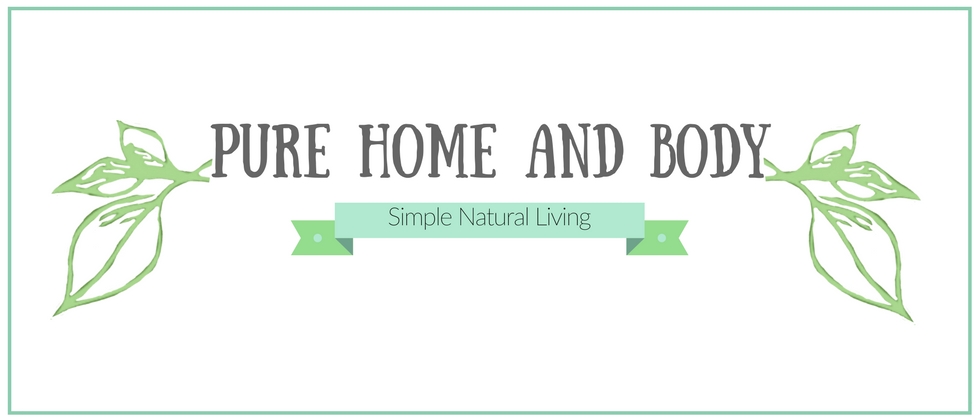








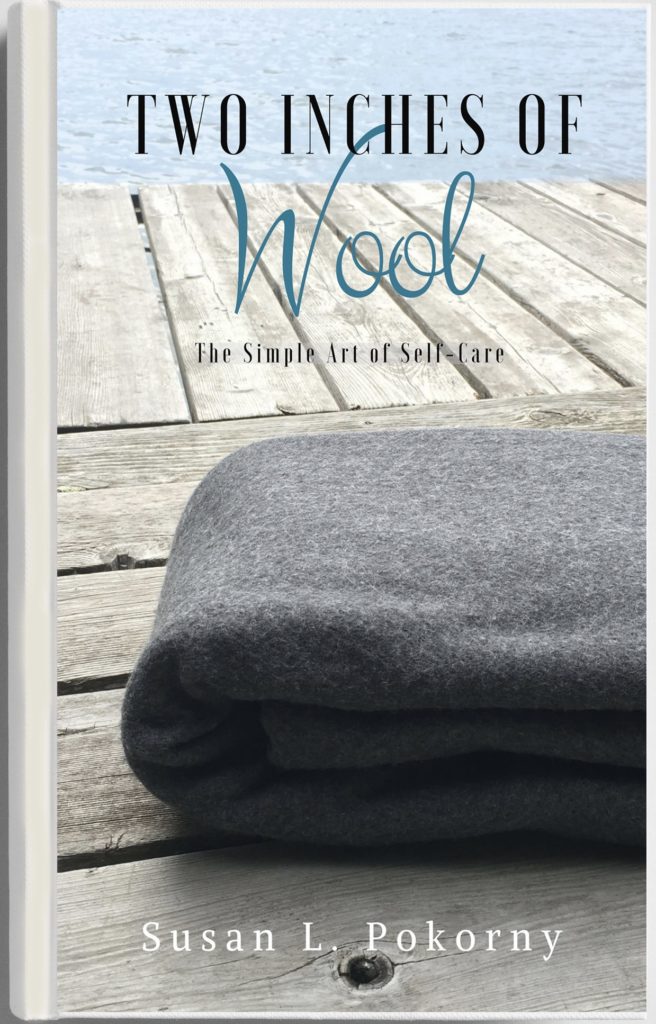
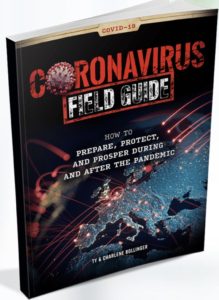
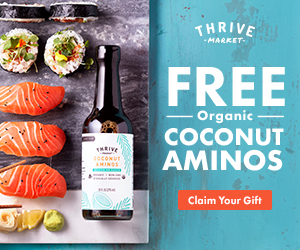

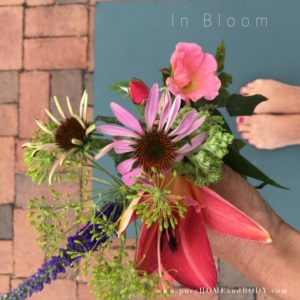
Hi Susan,
I love your website! I’ve been a YL independent distributor for about 6 months now and I love learning how to use them. Thanks for nursery info. I’m going to send friends to your website and give you credit for the info I gleaned from. I hope this is OK with you. Please let me know.
All my best …
Elgielene
Nice to Meet you Elgielene! I’m glad you are enjoying the content and welcome to the world of therapeutic essential oils! Thanks for passing on my site to your friends, I’m glad we can connect. Let me know if you’d ever like to “borrow” content for your site or have a guest post. You are in a great position to have such a positive influence on your readers and clients and so many need to know the benefits of pure, quality essential oils.
Healthy Blessings,
Sue
Hi Susan,
I’m new to essential oils and chanced upon your blog/site while searching for basic information on them.
I must say your site if very informative. Thank you so much for the details you have shared 🙂 It makes my wonder why I have been away from these oils till now ? There are so many benefits and it’s all natural !
One question though – any brands that you know of that produce only 100% pure essential oils without any chemicals mixed in ? There are many brands out here, but most of them aren’t pure even if they don’t mention anything of such sort in their labels. I have no idea which to buy (T__T)
Can we test essential oils by putting a drop on tissue paper to see if it evaporates or leaves stain ? It would help me out a lot 🙂
Warm Regards
Rads
Thanks for stopping by Rads, unfortunately a tissue paper drop is not really a scientific test. Actually your nose may be a better indicator – unless it is dulled by synthetics. I prefer to get oils from a company that has full quality control over their oils from plants to distillation to packaging and testing. Any oils company that you buy from should at the very least provide a chemistry profile for each oil upon request, and you also need to understand that profile. One company I researched said their lemon EO had b-carophyllene in it which may sound scientific to those unfamiliar with therapeutic grade oils but that molecule may be an indicator of a shortcut the company took (b-carophyllene occurs in the lemon leaf but not the rind where citrus limon should be cold pressed from). Hope that helps! Cheers~
Thank you so much Susan for the response.
Bottomline is I need to do a hell lot of research before I buy essential oils.(T__T). Time to study about them 🙂 🙂
Anyway, cool blog you have here, I am officially your Page’s follower on Facebook 🙂
Thanks once again.
Hello I use essential oils and let me tell you it really works there areno harm in them at all. But dont use them by itself mix it with water. There are home remedy ingredients out there to use also. Good luck you will not regret it trust me ?